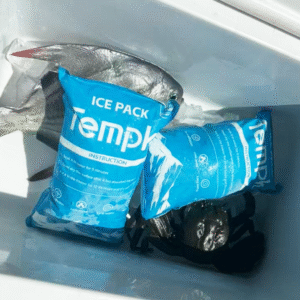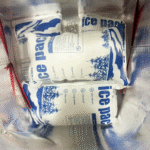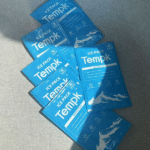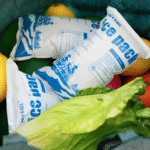Dry Ice Pack TSA Airplane: What’s Allowed in 2025?
Flying with a dry ice pack in 2025 is possible—whether you’re transporting frozen food, Fleisch, or medicines—but it’s crucial to understand the strict TSA, FAA, and airline regulations. You can carry up to 2.5 kg (5.5 lb) of dry ice in your carry-on or checked baggage, provided it’s packaged properly and has airline approval. Unten, we walk through everything you need to know to ensure smooth travel.
-
How much dry ice can you carry in 2025? Find the latest TSA and FAA regulations.
-
What are the packaging and labeling requirements? Ensure safe and compliant travel.
-
Carry-on vs. checked baggage rules: What are the key differences?
-
How to pack your dry ice pack TSA-konform: Step-by-step guide.
-
What to do if you’re flying with meat or frozen food? Specialized advice for perishable goods.
What is the Official Limit for a Dry Ice Pack TSA Airplane Trip?
Direkte Antwort:
The FAA and TSA allow you to bring up to 2.5 kg (5.5 lb) of dry ice per passenger in both carry-on Und checked baggage, but the container must be vented, properly marked, and airline-approved.
Why This Matters:
Trockeneis untermauert, releasing carbon dioxide (Co₂) Gas, which can be hazardous if not properly ventilated. Der TSA checks your container at security, und die FAA sets the weight limit to ensure that the CO₂ gas doesn’t pose a risk to passengers or crew.
Key Packing and Labeling Requirements:
-
Vented Packaging: Your cooler must allow the gas to escape. This prevents pressure from building up, which could lead to hazardous situations.
-
Clear Marking: Packages must display the words “Dry Ice” or “Carbon Dioxide, solid” along with the net weight in kilograms (Z.B., “2.5 kg”).
-
Airline Approval: You must notify your airline in advance, and approval is required for both carry-on and checked baggage.
| Path | What You Carry | Max Trockeneis | Etiketten & Documents | What to Tell Staff |
|---|---|---|---|---|
| Carry-on baggage | Vented cooler | 2.5 kg (5.5 lb) | “Trockeneis” + Netz kg | “Frozen food with dry ice, unter 2.5 kg.” |
| Checked baggage | Vented cooler inside suitcase or standalone | 2.5 kg (5.5 lb) | “Trockeneis” + Netz kg | “Dry ice marked on bag, ≤ 2.5 kg.” |
| Air cargo shipment | Isolierter Versender, Und 1845 | Variiert | PI 954 + Klasse 9 + waybill entries | “UN 1845, PI 954, net kg on package.” |
How Do Carry-on vs. Checked vs. Cargo Rules Differ?
Direkte Antwort:
Beide carry-on Und checked baggage allow dry ice (bis zu 2.5 kg), Aber cargo shipments follow different rules (Hier ist pi 954) erfordern Klasse 9 hazard labels Und waybill entries.
Erläuterung:
While passengers follow TSA/FAA Regeln, Versender folgen IATA Dangerous Goods Regulations (DGR). Dry ice in passenger baggage requires marking with “Dry Ice” and the net weight; in contrast, Ladung shipments require more detailed labeling and documentation.
Specialized Airlines Policies (2025)
Major airlines, einschließlich Delta, United, Und American Airlines, folgen FAA/TSA Vorschriften, requiring vented containers and clear labeling. Stets check with your carrier for specific requirements, as some airlines may ask for prior approval.
How to Pack a Dry Ice Pack TSA-Compliant Cooler?
Direkte Antwort:
For smooth screening, ensure your cooler is vented, clearly marked, and packed following the correct guidelines. Below is a step-by-step guide for preparing your dry ice pack TSA airplane compliant cooler.
Step-by-Step Packing Instructions:
-
Pre-freeze your food or medicine thoroughly before packing.
-
Choose a vented cooler that meets carry-on or checked baggage size rules.
-
Layer dry ice on top of the items. Kalte Luftwaschbecken, so dry ice placed on top ensures better cooling.
-
Ensure the cooler is vented—never seal it airtight to allow CO₂ gas to escape.
-
Mark the cooler with the words “Dry Ice” or “Carbon Dioxide, solid” and the net weight.
-
Consider adding absorbent materials to manage condensation and prevent wet ice.
Für die Spitze:
For fast TSA screening, keep the vent visible and explain that your package contains frozen food or medicine with dry ice under 2.5 kg.
Trockeneis vs. Gelpackungen: Which Is Best for Air Travel?
Direkte Antwort:
Verwenden Trockeneis for longer trips or when you need items to stay frozen. Gelpackungen are more convenient for shorter trips, but they must remain fully frozen at TSA security.
| Kühlmethode | Temperaturbereich | TSA/FAA Restrictions | Vorteile | Drawbacks |
|---|---|---|---|---|
| Trockeneis | –109 °F (–78 ° C.) | 2.5 kg max, Entlüftungsbehälter | Lang anhaltende Kühlung, ideal for meat, Fisch | Requires handling precautions, risk of frostbite |
| Gelpackungen | 0 °C to –15 °C | Must be frozen at screening | Leicht zu handhaben, wiederverwendbar | Thaws quickly, not as cold as dry ice |
| Eiswürfel | 32 ° F (0 ° C) | Must be frozen solid | Inexpensive and readily available | Short cooling time, messy when melted |
2025 Trends in Dry Ice Air Travel and Packaging
Innovations in Packaging:
-
Smart coolers are becoming more common, Angebot real-time CO₂ and temperature monitoring via mobile apps.
-
Eco-friendly materials, wie zum Beispiel biodegradable foams, are replacing traditional packaging, reducing environmental impact without compromising performance.
-
Pre-approved dry ice bags are being offered by airlines, simplifying the process for travelers.
Markteinsichten:
As more consumers use specialty food services, dry ice travel has surged by 15% annually since 2022. Airlines are streamlining approval Prozesse, Und standardized guidelines are expected to make it easier to travel with dry ice by 2025.
Gemeinsame FAQs
Can I bring a dry ice pack in my carry-on bag?
Ja, bis zu 2.5 kg (5.5 lb), in einem belüfteten Behälter, mit Zustimmung der Fluggesellschaft.
Can I carry more than 2.5 kg of dry ice?
NEIN, exceeding the limit requires special arrangements with the airline.
Wie lange dauert Trockeis in einem Kühler??
Typischerweise, 2.5 kg lasts 18–24 hours, depending on insulation and environmental conditions.
Is Styrofoam allowed for dry ice containers?
Many airlines accept vented Styrofoam, Aber hard plastic coolers are preferred. Always confirm with your carrier.
Summary and Action Plan
Schlüsselpunkte:
To fly with dry ice, keep your package entlüftet, clearly labeled with “Dry Ice” and the Nettogewicht, Und get airline approval.
Aktionsschritte:
-
Weigh your dry ice (≤ 2.5 kg) and label the container.
-
Ensure the container is vented and not airtight.
-
Contact your airline and secure prior approval.
-
At the TSA checkpoint, declare the dry ice and ensure the vent is visible.
Über Tempk
Tempk specializes in creating innovative cold chain solutions, ensuring the safe transport of perishable goods. Our products meet or exceed FAA and TSA standards, making travel with dry ice hassle-free.
Aufruf zum Handeln:
Need help with your cold chain solutions? Kontakt tempk for expert advice or browse our products to ensure your dry ice travels safely.
























